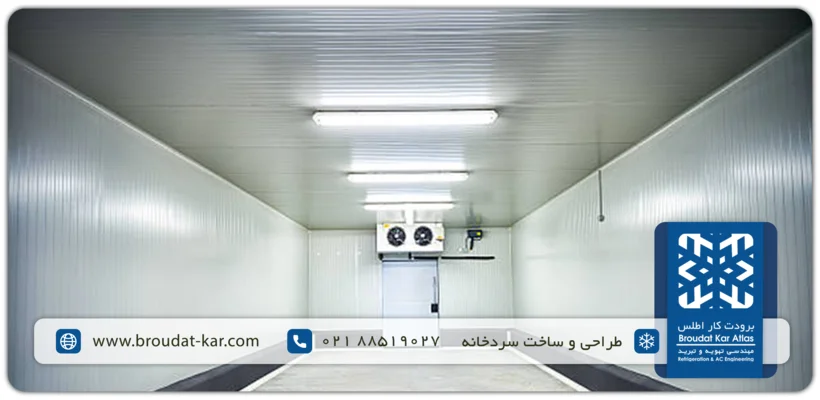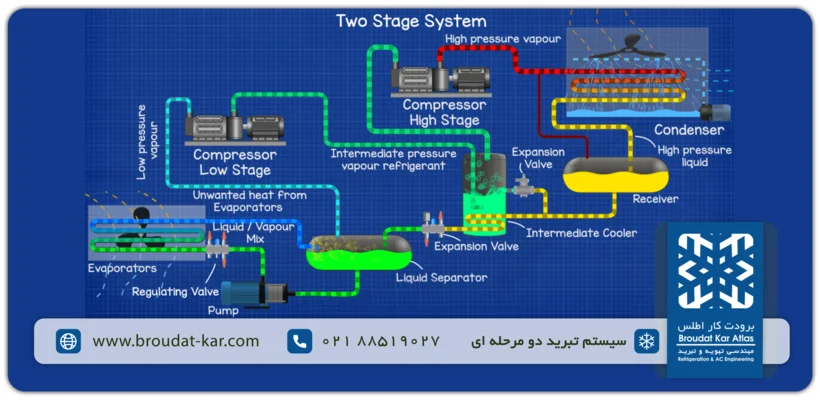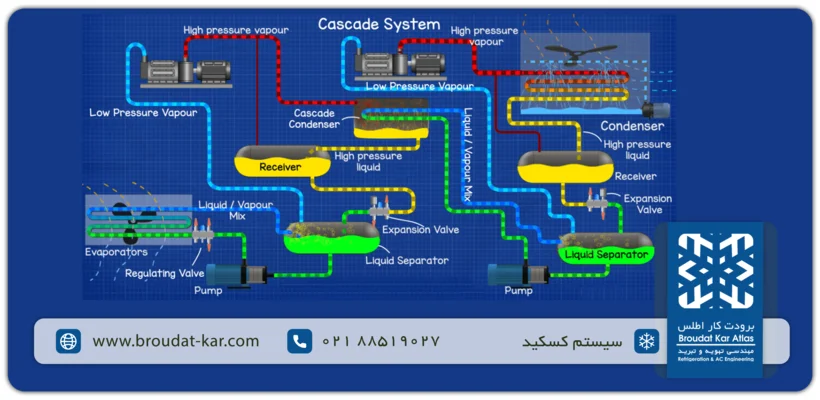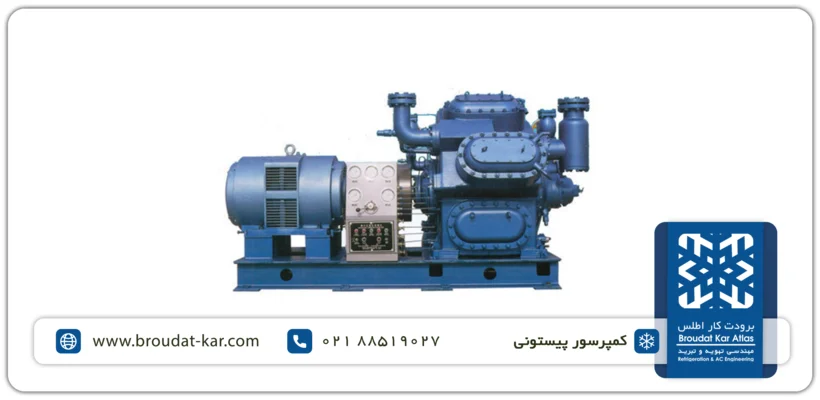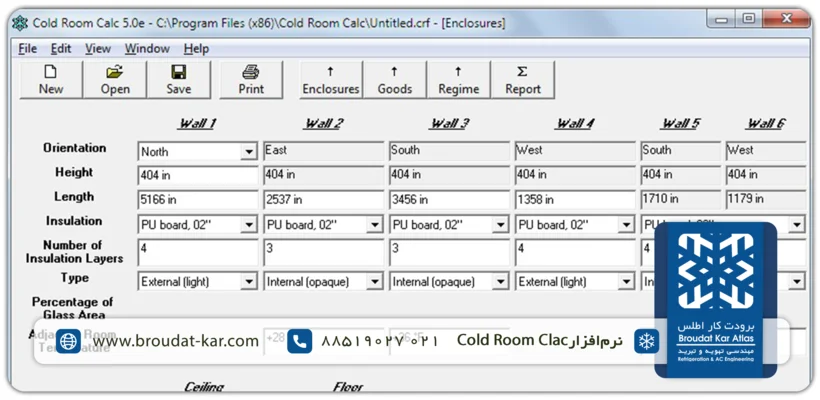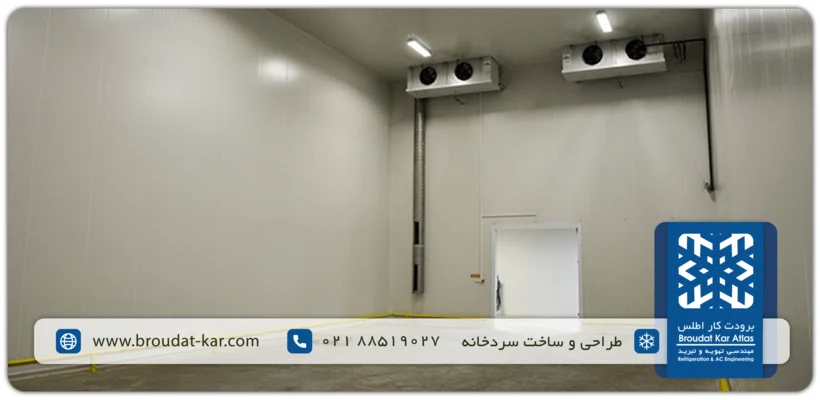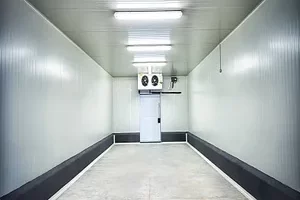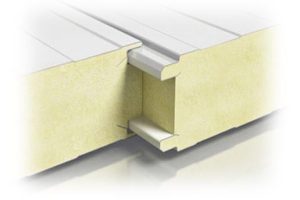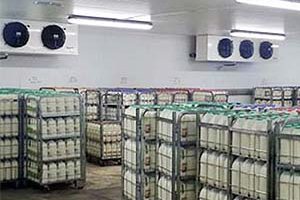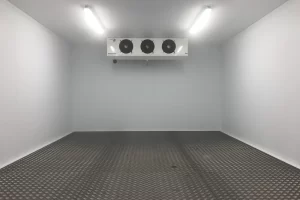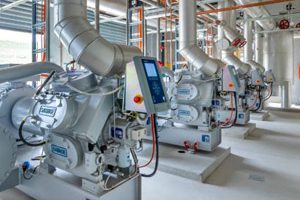Design and Construction of Industrial Cold Rooms
Designing and constructing an industrial cold storage facility involves creating a specialized warehouse with thermal and humidity insulation, temperature control systems, and proper layouts for storing products at specific temperature and humidity levels for extended periods. The design and construction of industrial cold storage require a comprehensive understanding of fluid mechanics, electrical engineering, and civil engineering.
Cold storage facilities are crucial for industries that require controlled temperature environments for their products. The design and construction of industrial cold storage demand precise planning and engineering to ensure that these facilities meet the specific needs of the industry and comply with safety and environmental regulations. The required temperature range for a cold storage facility depends on the products being stored inside. The size and capacity of the cold storage facility depend on the volume of products that need preservation. The compressor is the heart of the system, responsible for providing the refrigeration needed to maintain the required temperature. Proper insulation of the cold storage facility is highly important for preserving the necessary temperature and reducing energy consumption. Sometimes the quality of the air in the cold room is also important for maintaining the quality and safety of the stored products.
Designing and constructing industrial cold storage facilities must comply with safety and environmental regulations to ensure the safety of workers and environmental protection. The construction of industrial and commercial cold storage facilities is a complex process that requires adherence to various safety standards, including those .related to design, operations, and environmental impacts
Designing and building industrial cold storage involves creating a specialized storage facility with thermal insulation, refrigeration cycles, and temperature control systems to maintain products under optimal conditions for extended periods. This complex process demands expertise and a thorough comprehension of fluid mechanics, electrical engineering, and civil engineering. The cold storage facility is crucial for industries that require controlled temperature environments for their products, and meticulous planning and engineering ensure that these facilities meet specific industry needs and comply with safety and environmental regulations.
Understanding the Significance of Industrial Cold Storage Design Across Different Sectors
The importance of industrial cold storage design lies in its ability to provide a controlled environment for the preservation of various products. This specialized warehouse, equipped with thermal insulation, humidity control systems, and precise temperature regulation, plays a crucial role in maintaining the integrity and quality of stored items over extended durations.
Cold storage facilities are vital components of supply chains, especially in industries where temperature-controlled environments are essential. These facilities are utilized for storing perishable goods, pharmaceuticals, chemicals, flowers, and more. By preventing spoilage and degradation, cold storage not only safeguards product quality but also facilitates efficient global distribution networks.
For farmers, cold storage acts as a balancing factor between supply and demand in the market. It allows them to store produce during periods of abundance and release it strategically when demand is higher, contributing to market stability. Moreover, the extended shelf life provided by cold storage enhances the overall utility and value of stored products.
In summary, the design of industrial cold storage is of paramount importance across diverse industries, ensuring the preservation, quality, and strategic management of various goods within a controlled and optimized environment.
Categories of Cold Storage
Cold storages are classified based on their function, the products they handle, the refrigerants used, and the temperature ranges maintained. The classifications are as follows:
Based on Function
Based on Refrigerant
Based on Temperature Range
Based on Products
Cold storages can also be categorized concerning their facilities, equipment, level of automation, and atmosphere control systems. This general classification provides an overview of the diverse types of cold storage structures.
Key Factors Influencing Industrial Cold Storage Design
The design of industrial cold storage is shaped by a comprehensive consideration of key factors to ensure desirable performance, energy efficiency, and product preservation within the facility. The design and calculations involve assessments and studies at various levels, including site plan examination, cold storage layout design, mechanical and thermodynamic design encompassing heat load calculations, electrical design covering power circuits, control systems, emergency systems, safety, lighting, etc., and structural design comprising flooring, insulation, prerequisites.
Additionally, the selection of equipment tailored to the needs, appropriate budgeting, geographical location impacts, and more must be taken into account in the cold storage design. Lastly, the crucial aspect of execution planning, involving the preparation of execution drawings, scheduling, deploying specialized human resources, etc., holds significant importance in cold storage construction.
Insulation Work and Structural Design in Industrial Cold Storage
Importance of Insulation
Efficient insulation, achieved through the use of appropriate materials to minimize heat transfer and maintain stable internal temperatures, is vital for ensuring product quality and energy efficiency. In contemporary industrial cold storage design, polyurethane sandwich panels with a density of 40 kg/m³ are commonly employed. The heat transfer coefficient of these insulators is inversely related to their thickness; thicker panels exhibit lower coefficients. For example, a polyurethane sandwich panel with a 10 cm thickness has a coefficient of approximately 0.185 W/m² °K, while a 15 cm thickness reduces it to about 0.119 W/m² °K. It’s important to note that these coefficients are not absolute, and consultation with the panel manufacturer is advisable during the design phase.
Structural Considerations
The design of foundation structures plays a critical role in supporting the weight of stored products and preventing potential damage. In the construction of industrial freezing cold storage, the installation of a crawl space beneath the salons is imperative. This crawl space facilitates natural airflow beneath the cold rooms, preventing concrete floor cracking. Additionally, to accommodate forklift transportation within the cold storage, the flooring should be of reinforced concrete type, capable of withstanding the weight of the forklift and its load together.
Selecting a Refrigeration System for Cold Storage Design
Choosing the appropriate refrigeration system is a pivotal element in cold storage design, significantly influencing energy efficiency, environmental considerations, and overall operational efficacy. The decision-making process for the type of refrigeration system entails a careful evaluation of the following factors:
Single-Stage or Multi-Stage System
Single-stage refrigeration systems have a single compression cycle and are suitable for refrigeration needs with an average temperature range (+5 to -15 °C). In screw compressors, it is also possible to reach lower temperature ranges (-25 to -40°C) in a single step.
Multi-Stage Refrigeration Systems
Multi-stage refrigeration systems, with multiple compression cycles, have at least one compressor for each stage. These systems are more suitable for applications with lower temperatures.
Cascade Refrigeration Systems
Another type of multi-stage systems is called cascade refrigeration systems. These systems consist of two refrigeration cycles with different refrigerants, allowing them to achieve very low temperatures. The schematic below illustrates a cascade system.
Natural or Synthetic Refrigerants
Natural refrigerants like R717 ammonia (NH3) and R744 carbon dioxide (CO2) have a lower environmental impact, but their toxicity or flammability demands cautious handling.
Synthetic refrigerants contribute to ozone layer depletion, greenhouse gas emissions, and global warming. However, newer synthetic refrigerants, such as hydrofluorocarbons (HFC), have less detrimental effects, although their efficiency may not match that of older gases.
Types of Compressors
Screw Compressors
Screw compressors are suitable for medium to high refrigeration capacities, offering high energy efficiency and reliability. They have fewer rotating and moving parts compared to piston models. Typically, screw compressors are integrated units with an oil separator, oil pump, and, if necessary, an oil cooler. These units often feature a Programmable Logic Controller (PLC) responsible for managing capacity control, oil circuit, electrical circuit, and monitoring.
Piston Compressors
Piston compressors are used for low to medium refrigeration capacities and occasionally high capacities. While they are more economical, they have lower energy efficiency compared to screw compressors. These compressors operate within a limited pressure range, and achieving low temperatures using single-stage systems with piston compressors is not feasible.
Environmental Impact
Selecting refrigerants with lower Global Warming Potential (GWP) is crucial for minimizing the overall environmental impact of the system.
Heat Load Calculation Techniques
Accurate calculations of the heat load are essential for choosing the right refrigeration system. Conducting heat load calculations for a cold storage facility is vital to ensure its efficient and stable operation. Proper sizing and selecting equipment based on principles can significantly impact their lifespan and power consumption. Here, we outline key techniques for these calculations. As heat load calculations are primarily done using dedicated software nowadays, we’ll refrain from presenting the equations and focus on introducing critical factors.
Product Heat Load Calculation
Determining the amount of heat that must be removed from stored products, especially crucial in freezing processes, often dominates the total heat load calculation.
Infiltration and Ventilation Heat Load
Essential for products like fruits, calculating the heat increase from warm air infiltration during door openings or air exchange is crucial.
Conduction Heat Load
Understanding the heat transfer coefficient of selected insulation helps calculate heat transfer through walls, floors, and ceilings. Opting for better insulation leads to energy savings and reduced equipment wear.
Heat Load from Lighting and Equipment
Calculating the heat generated by lighting, machinery, and other equipment (fans, electric forklifts, etc.) in the cold storage is necessary.
Personnel Heat Load
Calculating the heat generated by individuals inside the cold storage, particularly in worst-case scenarios, is important.
Safety Factor
Typically, a safety factor of 15% to 20% is added to the final heat load for anticipated cases.
Accurate heat load calculations aid in selecting the right refrigeration system, reducing energy waste, ensuring optimal performance, and contributing responsibly to environmental conservation through enhanced energy efficiency, operational savings, and thoughtful cold storage design.
Layout of Loads and Shelving in Cold Storage Design
Efficiently designing the layout of loads and shelving is a pivotal aspect of cold storage design. Careful consideration is essential to maximize space utilization, preserve product quality, and facilitate uniform product rotation.
Maximizing Space Utilization through Optimal Shelving Designs
Efficiently utilizing available storage space requires careful selection of shelving designs. Key considerations include:
Choosing Types of Shelves
Evaluate options like pallet racks, boltless shelves, etc., based on product size and characteristics.
Adjustability
Opt for adjustable shelves to accommodate varying product sizes and quantities by reconfiguring them as needed.
Vertical Space Utilization
Install tall shelves, adhering to safety regulations, to make effective use of vertical space while ensuring easy access.
High-Density Storage Solutions
Implement solutions like mobile shelving systems or Automated Storage and Retrieval Systems (AS/RS) to significantly boost storage capacity.
Mezzanine Floors and Multi-level Systems
In limited floor space scenarios, consider incorporating mezzanine floors or multi-level storage systems to create additional storage levels.
Facilitating Easy Access and Streamlining Product Rotation through Efficient Layout
Designing a layout that ensures effortless access to products and minimizes the time and effort required for retrieval involves several considerations:
Aisles
Determine aisle width based on the type of equipment (e.g., forklifts) used for product movement, ensuring easy navigation.
Safe Pathways
Establish safe pathways for both personnel and equipment movement within the cold storage facility.
Different Temperature Zones
Organize the cold storage into zones according to temperature requirements, grouping products with similar temperature needs. However, consider the compatibility of certain fruits to avoid storage proximity issues.
Inventory Rotation
Implement efficient inventory rotation to maintain product freshness and reduce waste. Adhere to the First-In, First-Out (FIFO) principle, placing older products in front for easier access and use.
Labeling and Inventory Management
Deploy a robust labeling and inventory management system to accurately track product shelf life and movement.
Safety Considerations
Prioritize safety in the facility by ensuring secure and well-maintained shelves. Incorporate safety features like protective railings and shelf guards to prevent accidents.
Introduction to Cold Storage Design Software
Cold storage design is facilitated by various software applications, many of which come with trial versions or specific purchase requirements. Here are some prominent examples:
Coldroom Calc. Software
Renowned for accuracy, Coldroom Calc. is a Windows-based tool for calculating cold storage heat loads. While not free, it offers trial usage and supports both SI and I-P measurement units.
Unilab Cold Storage Software
Another powerful tool for heat load calculations, Unilab software operates on Windows and requires purchase for full access.
Coldroom Calculator LU-VE Mobile App
A free mobile application by the LU-VE Group, this app provides limited-parameter cold storage heat load calculations. While slightly less accurate than dedicated software, it offers reasonably precise results.
Coolselector Software by Danfoss
Developed by Danfoss, this software assists in selecting equipment and valves manufactured by the company. Prior knowledge of the heat load is necessary for its utilization.
Bitzer Selection Web-based Software
Created by Bitzer, this web-based tool aids in selecting compressors produced by the company. Similar to Coolselector, prior knowledge of the desired heat load is required.
These are just a few examples, and the refrigeration industry offers more specialized software and tools to cater to diverse needs.
Comparison of Manual vs. Software-Assisted Cold Storage Design
Comparison of Manual vs. Software-Assisted Cold Storage Design:
Cold storage design can be accomplished manually or with the aid of specialized software. The distinctions between these two approaches are delineated below:
– In manual design, heat transfer relationships and formulae are employed for all calculations and designs. Conversely, when utilizing cold storage design software, calculations and designs are executed through specialized software, which incorporates provided variables.
– Manual design may be susceptible to human errors and incomplete calculations. Conversely, design with cold storage software ensures precise and error-free calculations.
– Manual design is a time-intensive process, demanding a substantial amount of time for calculations and designs. Conversely, design with cold storage software is swift and efficient.
In summary, the utilization of cold storage design software enhances the quality and accuracy of the design, concurrently reducing design time and costs.
Phases of Cold Storage Design and Construction
Following the completion of the cold storage design and the determination of its requirements and heat load, the construction process unfolds in three distinct stages: equipment selection, assembly and construction of cold storage equipment, and installation and commissioning. Each stage is outlined in detail below:
Equipment Selection for Cold Storage Construction
Choosing appropriate equipment in terms of structure and performance, considering the equipment brand, is crucial. Key considerations involve:
– Selecting the refrigerant and compressor type (hermetic, semi-hermetic, piston, or screw) and its brand based on the designed cooling load and customer budget and requirements.
– Choosing the type (air-cooled or water-cooled) and brand of heat exchangers, including evaporators and condensers, based on project needs.
– Deciding on the type of expansion valve (electronic expansion valve or thermostatic) based on the required heat load.
– Selecting the insulation type for the cold storage and cold storage doors and estimating the required insulation area for walls, ceilings, and floors.
– Choosing the brand of electrical equipment for the electrical panel (European or Asian) based on customer needs or requests.
The proper selection of equipment type and brand significantly impacts the initial investment, facility compatibility with environmental conditions, and the system’s lifespan.
Supply and Construction of Cold Storage Equipment
The manufacturing and assembly of cold storage equipment occur at the manufacturer’s factory, and the equipment is prepared for on-site installation. This stage involves:
– Procurement and preparing of the cold storage compressor, along with connecting control equipment and pressure and temperature displays as a unit.
– Construction of heat exchangers, including evaporators and condensers, based on capacity sizing and design.
– Procurement of insulation and cold storage doors with suitable density according to the required area.
– Construction of the electrical panel based on the designed electrical plan and required options.
The supply and construction of cold storage equipment must align with the specific requirements and constraints of each project.
Installation and Commissioning of Cold Storage
The installation and commissioning of a cold storage facility encompass the following activities, conducted at the final location unless it is a portable cold room.
– Executing insulation and installing cold storage doors and connections with proper airtightness, including corners and required flashings.
– Preparing the frame and installing cold storage equipment at the specified location.
– Conducting piping operations between equipment and installing required valves and control devices.
– Routing cables between equipment and wiring at the electrical panel.
– Performing pressure testing for leak detection and electrical system testing.
– Charging refrigerant and commissioning the cold storage.
– Handing over the cold room to the customer, marking the beginning of the warranty and service period.
The installation and commissioning of cold room should be entrusted to experienced and skilled engineers and technicians, as the correct implementation of these processes significantly influences equipment efficiency and lifespan.
Cost of Cold Room Construction and Influencing Factors
The construction cost of a cold storage facility is influenced by various factors, leading to significant variations. Key determinants of cold storage construction cost encompass the facility’s size and capacity, the required level of temperature control, the construction location, and the quality of construction. Additionally, the choice of refrigeration systems, insulation materials, and the integration of energy-efficient technologies can impact overall costs. Recognizing this is crucial, as a well-designed and efficient cold storage facility can result in long-term savings in operational and energy expenses.
While the initial investment may appear substantial, it is a strategic commitment that contributes to preserving temperature-sensitive goods with a focus on quality, safety, and cost-effectiveness. To tailor a pricing structure that aligns with your specific requirements and long-term business goals, it is advisable to consult with our experts.
Understanding and discussing these factors will ensure a tailored and effective solution for your cold storage needs, contributing to the long-term success and efficiency of your operations.
Atlas Refrigeration Services in Cold Storage Design and Construction
Tailored Consultation for Diverse Cold Storage Facilities
Our company excels in comprehending the distinct requirements of your cold storage needs. We extend consultation services for cold storage construction, leveraging the expertise of our seasoned engineers and refrigeration specialists. Whether you’re planning a new cold storage facility or optimizing an existing one, our comprehensive design services cover everything from site selection to system implementation. Our experts ensure that your facilities align seamlessly with the demands of your industry and specific product specifications.
Efficient and Eco-Friendly Solutions
In an era where environmental consciousness is on the rise, energy efficiency is paramount. Our team specializes in crafting and implementing energy-efficient refrigeration systems. We recommend and install cutting-edge technologies that not only reduce energy costs but also contribute to a lower carbon footprint. Embracing environmentally friendly refrigerants and innovative system designs, we aid in minimizing operational expenses while fostering sustainable development.
Safety Assurance
Our design services are meticulously structured to ensure your refrigeration facilities comply with global safety standards. We conduct thorough inspections, furnish essential documentation, and incorporate safety features such as fire suppression systems, air quality control, and refrigerant leak detection to safeguard your products and personnel.
Training and Knowledge Transfer
At Atlas Refrigeration, our ethos revolves around knowledge expansion and transfer. We provide training sessions for your staff, ensuring they possess the expertise to operate and maintain your cold storage facilities effectively. Knowledge transfer is a fundamental aspect of our services, guaranteeing that your team can adeptly handle daily operations and address specific challenges.
Atlas Refrigeration is committed not only to delivering refrigeration solutions but also to providing peace of mind. Our objective is to be your trusted partner, ensuring product quality, reducing operational costs, and contributing to the success of your business. With a diverse range of services and an unwavering commitment to excellence, we stand ready to support your needs at every stage of cold room design.
Warranty and After-Sales Services
We uphold the principle that a sale signifies the commencement of a commitment, rather than the conclusion of a transaction. In alignment with this pivotal principle and to honor the rights of our customers, all products supplied by Atlas Refrigeration are accompanied by a one-year warranty and 15 years of after-sales services.
Closing Remarks
As elucidated in this content, certain parameters must be established prior to the design and construction of a cold storage facility. The accurate definition of these parameters is crucial to ensure the efficient operation of systems and units over an extended period, thereby averting an escalation in energy consumption.
When undertaking the design and construction of cold storage, factors such as size, temperature range, insulation type, refrigeration system, lighting and ventilation system, flooring, shelving, and storage principles necessitate careful consideration. This article strives to acquaint you with the concepts, stages, and key aspects of cold storage design and construction, offering a comprehensive explanation of the design processes and calculations involved.Top of Form
The requirements of an industrial cold room are dictated by the specific storage temperatures needed for the products it will house. However, the precise technical specifications are established by experts who assess these needs, ensuring the system delivers optimal performance and efficiency.
The primary distinction among cold storage facilities used for various materials like food, medicine, and chemicals lies in the storage temperature. Additionally, specific health regulations for pharmaceutical storage, safety measures regarding explosion and combustion for chemical storage, and humidity control requirements for food storage are also crucial considerations in cold storage design.
Related posts
Design and Construction Of Cold room
Installation and Commissioning of Cold Rooms The meticulous installation and commissioning of a cold rooms facility in a principled
What is Cold Room Insulation? Cold room insulation is a vital component that prevents energy loss in cold rooms by
What is Industrial Cold store? An industrial cold store is a large-scale facility designed and constructed to preserve and
What is a Freon Cold Store? A freon cold store, is a cooling appliance that utilizes Freon refrigerant within its
Introduction to Ammonia Refrigeration Systems – Properties, Applications, and Equipment Overview Ammonia, with the chemical formula NH3 and the refrigerant
